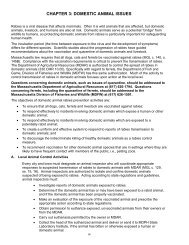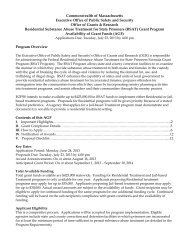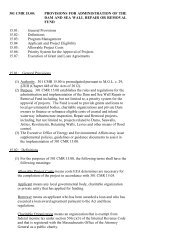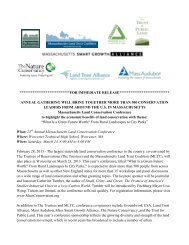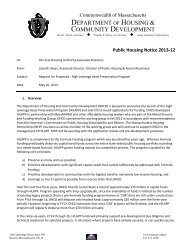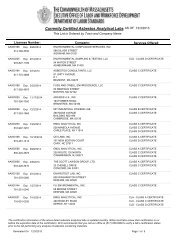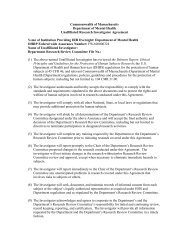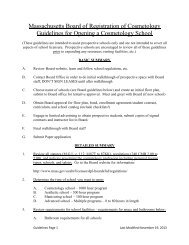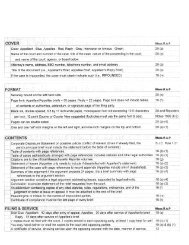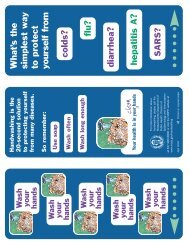Commingling Shellfish (PDF) - Mass.Gov
Commingling Shellfish (PDF) - Mass.Gov
Commingling Shellfish (PDF) - Mass.Gov
Create successful ePaper yourself
Turn your PDF publications into a flip-book with our unique Google optimized e-Paper software.
7. All handling and recordkeeping practices shall ensure that any container of shellfish can<br />
be traced-back to a specific harvest date and harvest area.<br />
Operations:<br />
1. Repacking:<br />
• Shellstock or shucked product from different lots shall not be commingled during<br />
repacking.<br />
2. Wet Storage:<br />
• <strong>Commingling</strong> of bivalve mollusks with other species in wet storage may subject the<br />
bivalve mollusks to contamination from pathogenic organisms from the nonmolluscan<br />
animals. Fish, crabs, lobsters, and other marine species may be harvested<br />
from polluted areas and may have ingested pathogens or accumulated them on their<br />
body surfaces. Therefore, holding such animals in the same system with bivalve<br />
mollusks presents a risk of cross contamination.<br />
• <strong>Shellfish</strong> from harvest areas not classified as “Approved” shall not be commingled<br />
during wet storage. If multiple lots of shellfish from “Approved” areas are being held<br />
in wet storage at the same time, the identity of each individual harvest lot and its<br />
harvest area shall be maintained throughout the wet storage process.<br />
• Shellstock shall not be commingled with other species in the same tank. If multiple<br />
tank systems use a common water supply system for both the bivalve mollusks and<br />
the other species, the process water shall be disinfected prior to entering tanks<br />
containing the bivalve mollusks.<br />
3. Depuration:<br />
• Different harvest lots of shellfish shall not be commingled during washing, culling,<br />
processing, or packing. If more than one harvest lot of shellfish is being processed at<br />
the same time, the identity of each harvest lot shall be maintained throughout the<br />
depuration process and final packing. If shellfish in different tanks are at different<br />
stages of depuration, each tank shall be labeled to show when depuration began. Nonpurified<br />
shellfish may not be removed from a depuration plant except under direct<br />
supervision of a health inspector.<br />
• Different shellfish species shall not be processed in the same depuration unit unless<br />
credible scientific evidence demonstrates that the species are compatible.<br />
4. Shucking:<br />
• Shellstock from different lots must be kept separated. The commingling of shellstock<br />
from different harvest areas is prohibited, except where all shellstock has been<br />
harvested from areas classified as “Approved”. Shucked product may be commingled<br />
only if it is from two consecutive days processing. No more than a single containersworth<br />
of shucked product may be commingled. The labeling on the container shall<br />
read “CO” before the date, e.g., CO050197 or CO121. The areas commingled must be<br />
documented in the daily shucking log and in the sales records.<br />
Date Issued: 05/08/05 Date Revised:



